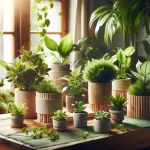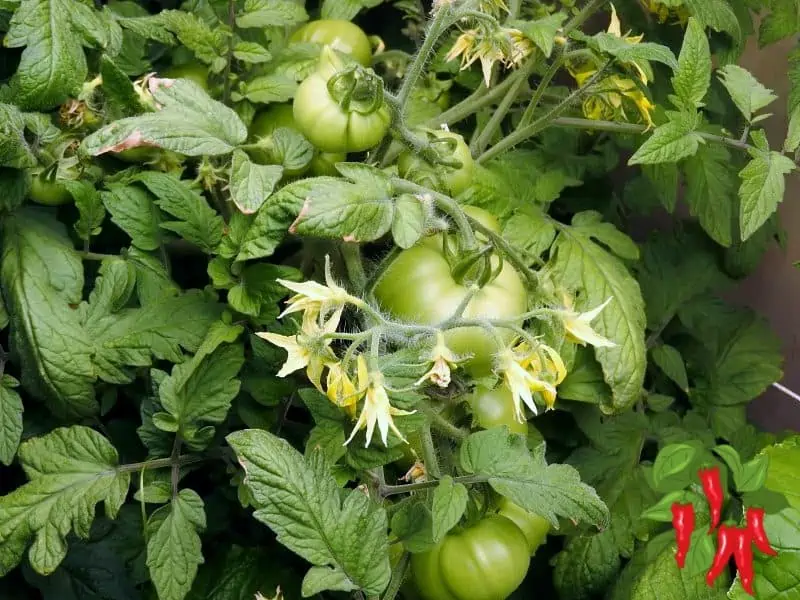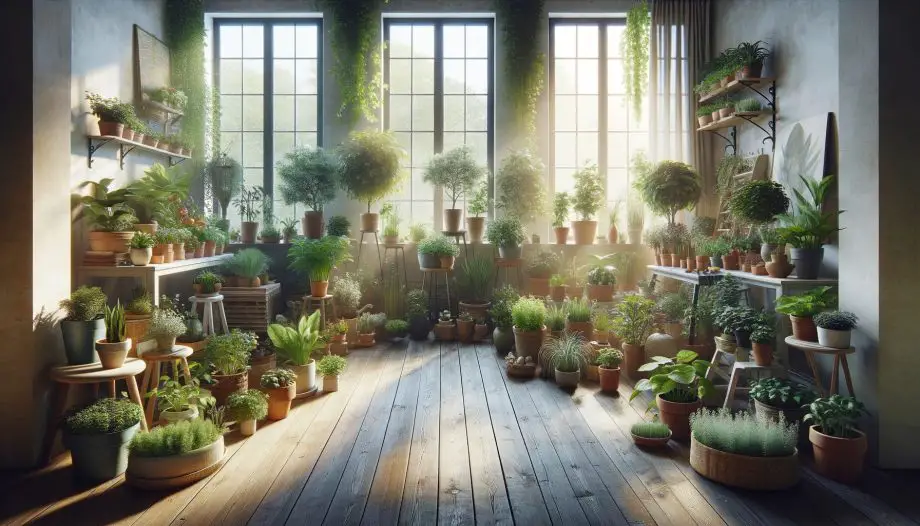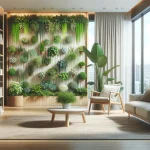This post may contain affiliate links. If you buy something from one of our links we may earn a commission. Thanks
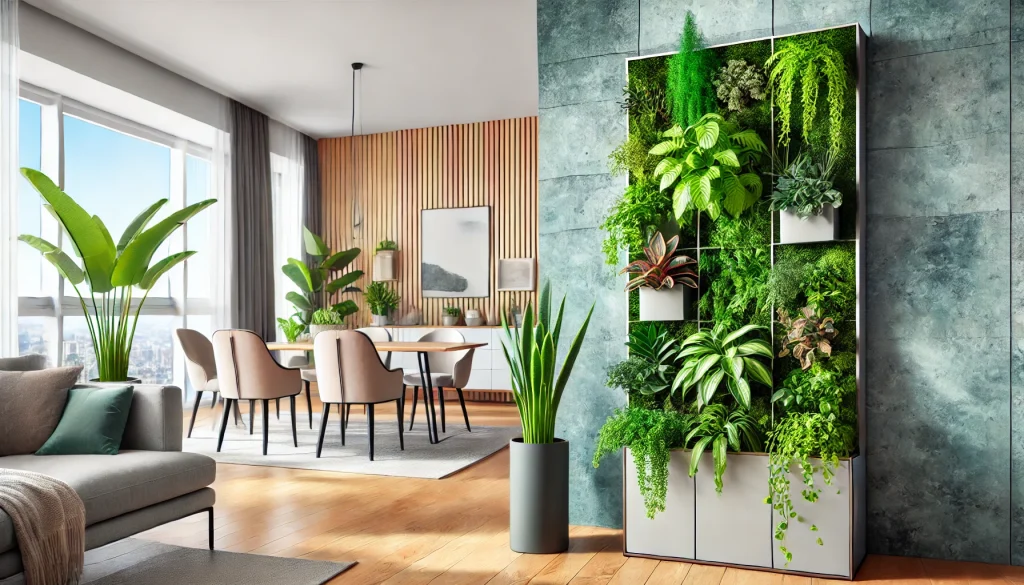
Indoor Vertical Gardens for Apartments: Space-Saving Tips
Howdy everyone! Indoor vertical gardens are a fantastic way to bring nature inside, even if you’re short on space.
If you’re living in an apartment and wishing you had an indoor green oasis, you’re in the right place.
Let’s dive into vertical gardening and see how you can transform your apartment into a green paradise.
Indoor Vertical Gardens Key Takeaways
- Indoor Vertical Gardens for Apartments are ideal for maximizing limited space while adding greenery to your home.
- These gardens can improve air quality and create a calming environment, making them perfect for apartment living.
1. What is an Indoor Vertical Garden?
If you’re looking to add some green to your apartment without taking up much space, indoor vertical gardens are your go-to solution.
These gardens allow you to grow plants vertically, making them perfect for small spaces. Let’s dive into what they are and how they work.
Definition and Concept
An indoor vertical garden is a method of growing plants on a vertically suspended panel using hydroponics or soil.
These gardens maximize limited space and can be created with various systems, from simple DIY setups to more complex structures like living walls.
Types of Vertical Gardens
- Green Walls: Think of these as living art pieces. They are panels filled with plants that grow vertically using either soil or hydroponics. Green walls not only look stunning but also help purify the air.
- Modular Panel Systems: These are like building blocks for your garden. You can easily install and arrange them to fit your space and style. They’re great if you want a flexible and customizable garden setup.
- DIY Vertical Gardens: For all you crafty folks, DIY vertical gardens are a fun project. Use items like pallets, mason jars, or hanging pots to create a unique and personalized garden that’s easy on the wallet.
Benefits of Indoor Vertical Gardens
Indoor vertical gardens offer a bunch of benefits. They help you make the most of your space, improve air quality, and add a splash of nature to your home.
Plus, they look pretty cool and can make your place feel more vibrant and welcoming.
Common Systems Used
- Hydroponic Systems: These systems are perfect if you want a clean and efficient garden. They use water and nutrient solutions instead of soil, making them easy to maintain indoors without the mess.
- Soil-Based Systems: If you prefer the traditional route, soil-based vertical gardens are the way to go. You can use pots or planters arranged vertically, which is simple to set up and great for beginners.
Choosing Plants
When picking plants for your indoor vertical garden, go for ones that do well indoors.
Herbs like basil and mint are fantastic choices, as well as succulents and small veggies like cherry tomatoes and lettuce.
These plants are easy to care for and will thrive in a vertical setup.
In a Nutshell
Indoor vertical gardens are a fantastic way to bring the outdoors in, especially if you’re tight on space.
They help improve your home’s air quality, add a touch of nature, and can be tailored to fit any style.
Whether you’re going for a DIY project or a more complex system, creating an indoor vertical garden is a rewarding experience.
So, get your hands dirty and start growing!
Hope this helps y’all get started on your green journey! Keep it green and happy gardening!
2. Types of Vertical Gardens for Apartments
Howdy everyone! If you’re dreaming of a garden but are short on space, indoor vertical gardens are a fantastic solution.
They let you grow your favorite plants vertically, making the most out of even the smallest spaces.
Let’s explore some great types of vertical gardens that are perfect for apartment living.
Green Walls
Worth Garden 36 Pockets Self Watering Vertical Planters Indoor Outdoor Living Wall
Green walls are like living art pieces that bring nature right into your home. They are panels filled with plants that grow vertically using hydroponics or soil. These gardens not only look stunning but also help purify the air and add a refreshing touch to your apartment.
Benefits of Green Walls:
- Air Purification: They absorb pollutants and release oxygen, improving indoor air quality.
- Aesthetic Appeal: Green walls can turn any bland wall into a vibrant, living masterpiece.
- Temperature Regulation: They can help insulate your home, keeping it cooler in the summer and warmer in the winter.
Modular Panel Systems
Modular panel systems are like the building blocks of indoor gardening. These easy-to-install panels can hold a variety of plants and can be arranged to fit your space and style.
They offer flexibility and can be customized based on your preferences and the available space.
Advantages of Modular Panel Systems:
- Flexibility: You can move and reconfigure the panels as needed.
- Customization: Mix and match different plants to create a unique garden.
- Easy Installation: Many modular systems are designed for simple setup, making them perfect for beginners.
DIY Vertical Gardens
For those who love a hands-on project, DIY vertical gardens are a creative and budget-friendly option.
Using items like pallets, mason jars, or hanging pots, you can craft a unique garden that fits your space and style.
DIY gardens are perfect for adding a personal touch and can be as simple or complex as you like.
DIY Vertical Garden Ideas:
- Pallet Planters: Repurpose old pallets by adding some soil and plants, then mount them on a wall.
- Mason Jar Gardens: Attach mason jars to a wooden board or directly to the wall and fill them with herbs or small plants.
- Hanging Pots: Use hooks and ropes to hang pots from the ceiling or wall, creating a cascading garden effect.
In a Nutshell
Indoor vertical gardens are a versatile and beautiful way to bring greenery into your apartment, no matter how small your space may be.
Whether you opt for a striking green wall, a flexible modular system, or a creative DIY project, there’s a vertical garden solution that can work for you.
So get started, have fun, and enjoy the benefits of having a lush, green space right in your home.
Remember, gardening is all about creativity and finding what works best for you. Keep it green and happy gardening!
3. Benefits of Vertical Gardens in Apartments

If you’re living in an apartment and thinking about starting a vertical garden, you’re in for a treat.
Vertical gardens not only bring a touch of nature indoors but also offer several practical benefits.
Let’s take a closer look at why these green walls are a great addition to any apartment.
Space-Saving
One of the biggest advantages of vertical gardens is that they save space. In a small apartment, every square inch counts.
Vertical gardens make the most of your available space by growing upwards instead of outwards.
This means you can enjoy a lush garden without sacrificing your precious floor space.
Why It’s Great:
- Maximizes Limited Space: Perfect for apartments with limited room.
- Versatile Placement: Can be installed on walls, balconies, or even in the kitchen.
Improved Air Quality
Plants are natural air purifiers. They absorb carbon dioxide and release oxygen, making the air in your apartment fresher and healthier.
Vertical gardens can also help filter out harmful pollutants and toxins, improving overall indoor air quality.
Health Benefits:
- Filters Pollutants: Plants like spider plants, peace lilies, and ferns are known for their air-purifying abilities.
- Increases Oxygen Levels: More plants mean more oxygen, which is great for your health.
Noise Reduction
Did you know that plants can help reduce noise levels? Green walls act as natural sound barriers, absorbing and deflecting noise. This is particularly beneficial in apartments where noise from neighbors or the street can be a problem.
How It Helps:
- Sound Absorption: The leaves, stems, and growing medium of vertical gardens can absorb sound waves.
- Quieter Living Space: Helps create a more peaceful and serene environment.
Aesthetic Appeal
Vertical gardens add a beautiful, natural element to your apartment. They can transform a plain wall into a stunning green feature, bringing life and color into your home.
The visual appeal of a vertical garden can make your space feel more inviting and relaxing.
Design Perks:
- Living Art: Creates a unique and dynamic focal point in any room.
- Personalized Decor: Customize your garden with a variety of plants to suit your style.
Mental Health Benefits
Gardening has been shown to reduce stress and improve mental well-being.
Having a vertical garden in your apartment can provide a sense of calm and satisfaction. The act of tending to your plants can be therapeutic and rewarding.
Mental Wellness:
- Reduces Stress: The presence of plants has a calming effect.
- Boosts Mood: Caring for plants can be a joyful and fulfilling activity.
Environmental Benefits
Vertical gardens can contribute to a more sustainable lifestyle. By growing your own herbs, vegetables, or even small fruits, you reduce the need for store-bought produce, which often comes with a significant carbon footprint.
Eco-Friendly Advantages:
- Sustainable Living: Growing your own food reduces reliance on commercial agriculture.
- Energy Efficiency: Green walls can help insulate your apartment, reducing heating and cooling costs.
In a Nutshell
Vertical gardens are more than just a trendy decor choice; they offer practical benefits that can enhance your apartment living experience.
From saving space and improving air quality to reducing noise and boosting mental well-being, there are plenty of reasons to start your own vertical garden.
So, get growing and enjoy the many perks of bringing a little greenery into your home!
Hope this inspires y’all to create your own indoor green oasis! Keep it green and happy gardening!
4. How to Start an Indoor Vertical Garden
Howdy everyone! Ready to bring a touch of green into your apartment? Starting an indoor vertical garden is easier than you might think.
Follow these simple steps to create your own vertical garden and enjoy the benefits of indoor gardening.
Choose Your Space
The first step in starting an indoor vertical garden is to find the right spot. Look for a place in your apartment with good natural light and access to water. This could be a sunny wall, a well-lit corner, or even near a window.
Tips for Choosing Your Space:
- Light Requirements: Most plants need at least 6 hours of sunlight a day. If natural light is limited, consider using grow lights.
- Accessibility: Make sure the spot you choose is easy to reach for watering and maintenance.
- Temperature and Humidity: Keep your plants away from drafts or heat sources to maintain a stable growing environment.
Select Your Plants
Next, decide what plants you want to grow. Opt for varieties that thrive indoors and suit your space and light conditions. Herbs, succulents, and small vegetables are great choices for indoor vertical gardens.
Best Plants for Indoor Vertical Gardens:
- Herbs: Basil, mint, thyme, and parsley are easy to grow and useful in the kitchen.
- Succulents: These low-maintenance plants like aloe vera and jade plant are perfect for beginners.
- Vegetables: Small vegetables like cherry tomatoes, lettuce, and radishes can flourish in a vertical setup.
Set Up Your System
Once you’ve chosen your space and plants, it’s time to set up your vertical garden system. There are several ways to do this, depending on your budget and DIY skills.
Setting Up Your Garden:
- Shelves: Install shelves on your wall to hold pots or planters. This is a simple and effective way to create a vertical garden.
- Hanging Planters: Use hooks and ropes to hang pots from the ceiling or wall. This method saves floor space and adds a decorative touch.
- DIY Setup: Get creative with items like pallets, mason jars, or repurposed materials. DIY projects can be both fun and cost-effective.
Step-by-Step Guide:
- Mount Shelves or Hooks: Secure your shelves or hooks to the wall, ensuring they are sturdy enough to support the weight of your plants.
- Prepare Your Planters: Fill pots or planters with the appropriate growing medium (soil for traditional plants, water and nutrients for hydroponics).
- Plant Your Selections: Place your chosen plants in the planters, ensuring they are spaced appropriately to allow for growth.
- Set Up Watering System: Depending on your setup, you might need a drip irrigation system or self-watering planters to keep your plants hydrated.
- Arrange and Adjust: Arrange your planters on the shelves or hang them in place. Adjust the placement to ensure all plants get enough light.
In a Nutshell
Starting an indoor vertical garden is a rewarding project that brings life and color into your home.
By choosing the right space, selecting suitable plants, and setting up an effective system, you can create a beautiful and functional garden that fits perfectly in your apartment.
So, roll up your sleeves and get started on your vertical gardening journey!
Hope y’all find this guide helpful! Keep it green and happy gardening!
5. How to Build an Indoor Garden in Your Apartment
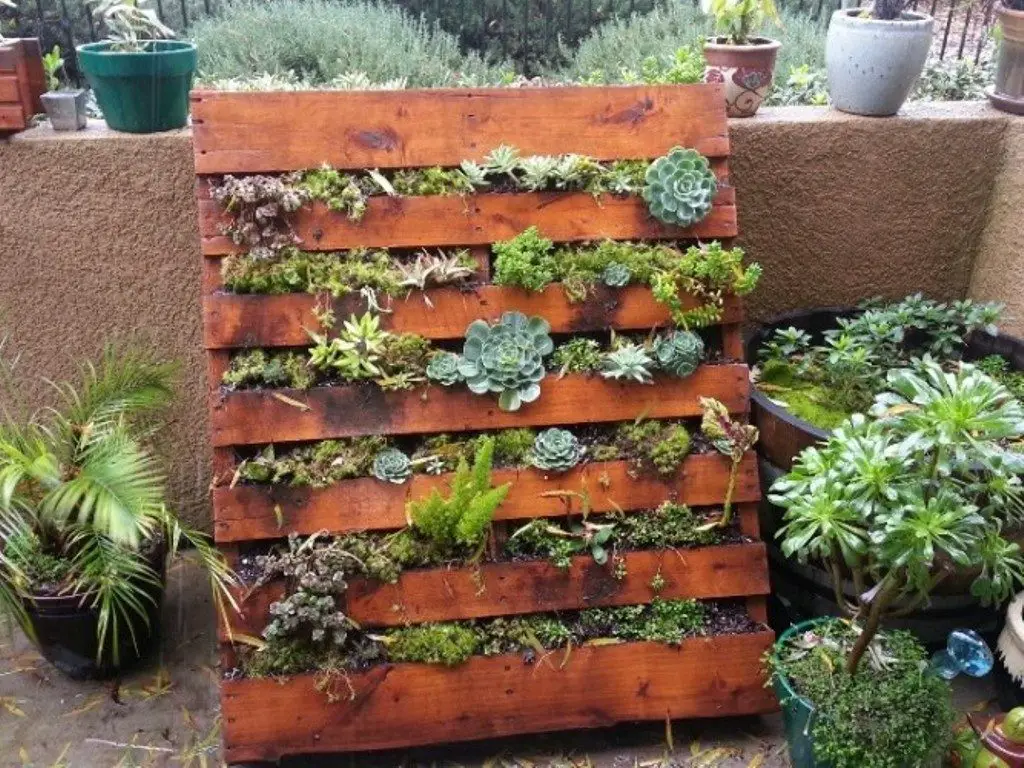
Howdy everyone! If you’re ready to bring some greenery into your apartment, building an indoor garden is a fun and rewarding project.
It’s easier than you might think! Let’s break it down into simple steps so you can get started on your indoor garden today.
Gather Materials
First things first, you’ll need to gather all the necessary materials. Having everything on hand will make the process smooth and enjoyable.
Materials You’ll Need:
- Planters: Choose pots, hanging baskets, or vertical planters based on your space and style.
- Growing Medium: Depending on your setup, you’ll need soil for traditional plants or a hydroponic system for soil-less growing.
- Tools: Basic gardening tools like a trowel, watering can, and pruners will come in handy.
- Plants: Pick indoor-friendly plants that suit your light conditions and personal preferences.
Install Your Garden
Once you have all your materials, it’s time to set up your indoor garden. Whether you opt for a wall-mounted system or a freestanding setup, follow these steps to get everything in place.
Step-by-Step Installation Guide:
- Choose Your Location: Pick a spot with good light and easy access for watering and maintenance. A sunny wall or corner near a window is ideal.
- Mount Shelves or Planters: If you’re using wall-mounted planters, securely attach them to the wall. For shelves, ensure they are sturdy enough to hold the weight of the plants and soil.
- Prepare the Planters: Fill your pots or planters with potting soil or set up your hydroponic system according to the instructions. Make sure the growing medium is appropriate for your chosen plants.
- Plant Your Greenery: Place your plants in the planters, ensuring they have enough space to grow. Follow planting guidelines for spacing and depth.
- Water and Feed: Give your plants a good watering after planting. Depending on the plants, you might need to add fertilizer to support their growth.
DIY Projects
For those who love a good DIY project, creating your own planters can be a fun and cost-effective way to build your indoor garden.
Here are a couple of budget-friendly ideas to get you started.
DIY Indoor Garden Ideas:
- Mason Jar Garden: Attach mason jars to a wooden board or directly to the wall. Fill them with soil and plant herbs or small plants. This setup is perfect for kitchen gardens.
- Ladder Planter: Repurpose an old ladder by adding planks across the steps to create shelves. Place your pots on the shelves for a rustic and charming vertical garden.
- Hanging Baskets: Use hooks and ropes to hang baskets from the ceiling or wall. Fill the baskets with trailing plants for a cascading green effect.
- Pallet Garden: Repurpose an old pallet by attaching landscape fabric to the back and filling the spaces with soil. Plant a variety of herbs, flowers, or succulents in the slats. This is a great way to recycle materials and create a unique garden.
In a Nutshell
Building an indoor garden in your apartment is a fantastic way to bring nature inside, even in limited space.
With the right materials, a bit of planning, and some creativity, you can create a beautiful and functional garden that enhances your home.
So, gather your supplies and get started on your indoor garden adventure today!
Hope y’all find this guide helpful! Keep it green and happy gardening!
6. Cost of Building a Vertical Garden
If you’re thinking about setting up a vertical garden in your apartment, you might be wondering about the costs involved.
The good news is, you can tailor your garden to fit your budget. Let’s break down the different options and some handy tips to keep costs low.
DIY Projects
DIY vertical gardens are a fantastic way to save money and get creative. Depending on the materials you choose and the complexity of your project, you can set up a beautiful vertical garden for as little as $50.
Cost Breakdown for DIY Projects:
- Materials: Recycled pallets, mason jars, or old ladders can be repurposed at little to no cost.
- Tools: Basic tools like a hammer, nails, and a drill might already be in your toolbox. If not, these can be bought inexpensively.
- Plants and Soil: Small starter plants and potting soil can be found at local garden centers or even online at budget-friendly prices.
- Save even more by growing plants from seeds.
Pre-made Systems
If DIY isn’t your thing or you prefer a more polished look, pre-made vertical garden systems are a great option. These systems range from simple wall planters to sophisticated hydroponic setups.
Cost Range for Pre-made Systems:
Hanging Planting Grow Bags, 90 Pockets Wall Planter Wall Mounted
- Basic Wall Planters: Simple, easy-to-install options can start around $100.
- Advanced Hydroponic Systems: These can range from a few hundred dollars to over a thousand, depending on the size and features.
Budget Tips
You don’t need to break the bank to build a vertical garden. Here are some tips to keep your costs down while still creating a beautiful and functional garden.
Money-Saving Tips:
- Use Recycled Materials: Repurpose items like old wooden pallets, tin cans, or plastic bottles for planters.
- Shop for Deals: Keep an eye out for sales at garden centers or online stores. You can often find plants and supplies at discounted prices.
- Start Small: Begin with a few plants and add more over time as your budget allows.
- Grow from Seeds: Instead of buying mature plants, start from seeds which are much cheaper.
In a Nutshell
The cost of building a vertical garden can vary widely depending on whether you go the DIY route or opt for pre-made systems.
DIY projects can be done for as little as $50, while pre-made systems can range from $100 to several hundred dollars.
By using recycled materials and shopping smart, you can create a beautiful vertical garden without spending a fortune.
Hope this helps y’all get started on your green journey! Keep it green and happy gardening!
7. Is It Cheaper to Build Vertically?
If you’re thinking about setting up a garden in your apartment, you might wonder if going vertical is more cost-effective.
Building a vertical garden can indeed save you money in the long run. Let’s take a look at why this is a budget-friendly option.
Space Efficiency
One of the biggest cost-saving benefits of vertical gardening is space efficiency.
Traditional gardens require a lot of ground space, which can be a luxury in an apartment setting.
Vertical gardens make use of walls and vertical spaces, which means you can grow more plants without needing a large area.
Why Space Efficiency Saves Money:
- Maximized Use of Space: You can grow a variety of plants in a small footprint, reducing the need for larger, more expensive growing areas.
- Less Need for Multiple Containers: Vertical systems often consolidate plants into fewer, larger structures, which can be cheaper than buying numerous individual pots and planters.
Long-term Savings
Vertical gardens can also lead to significant long-term savings. They typically have lower maintenance costs and make better use of small spaces, which can help you save money over time.
Long-term Cost Benefits:
- Lower Maintenance Costs: Vertical gardens often require less soil, less water, and fewer pest control measures compared to traditional gardens, which can reduce your gardening expenses.
- Efficient Water Use: Many vertical gardens use hydroponic systems or self-watering setups, which can be more water-efficient and lower your water bill.
- Reduced Plant Replacement: Vertical gardens can protect plants from certain pests and diseases better than traditional gardens, reducing the need for replacing damaged plants.
In a Nutshell
Building a vertical garden can be a cost-effective option. By maximizing space and offering long-term savings on maintenance and resources, vertical gardens provide a budget-friendly way to bring greenery into your home.
So if you’re looking to garden without spending a fortune, going vertical is a great choice!
Hope this helps y’all decide on your gardening setup! Keep it green and happy gardening!
8. Making a Vertical Garden Cheap
Howdy everyone! If you’re looking to create a vertical garden on a budget, you’re in luck.
There are plenty of ways to save money while still building a beautiful and functional garden.
Here are some tips to help you get started without breaking the bank.
Use Recycled Materials
One of the best ways to cut costs is by using recycled materials. Items you already have around the house can be repurposed into planters and garden structures.
Ideas for Recycled Materials:
- Pallets: Old wooden pallets can be transformed into vertical planters by adding landscape fabric and soil. They’re sturdy and perfect for holding a variety of plants.
- Mason Jars: Attach mason jars to a wooden board or directly to your wall. Fill them with soil and small plants for a rustic, charming look.
- Old Containers: Tin cans, plastic bottles, and even old kitchenware can be cleaned and used as plant containers. Just make sure to add drainage holes.
DIY Hacks
Getting crafty with some DIY projects can also help you save money and create a personalized garden that fits your space perfectly.
DIY Vertical Garden Hacks:
- Ladder Planter: Repurpose an old ladder by adding planks across the steps to create shelves. This makes for a unique and space-efficient vertical garden.
- Shoe Hanger: Turn a closet shoe hanger into a vertical wall garden.
- Hanging Baskets: Use hooks and ropes to hang baskets from the ceiling or wall. This not only saves space but also creates a beautiful, cascading green effect.
- DIY Irrigation System: Set up a simple drip irrigation system using tubing and connectors. This ensures your plants get the right amount of water without wasting any.
Additional Money-Saving Tips
Budget-Friendly Tips:
- Start with Seeds: Instead of buying mature plants, start from seeds which are much cheaper. This is a great way to grow herbs and vegetables.
- Buy in Bulk: Purchase soil, fertilizer, and other supplies in bulk to save money. Look for sales and discounts at your local garden center.
- Swap and Share: Trade plants and cuttings with friends or join a local gardening group to share resources and tips.
In a Nutshell
Creating a vertical garden on a budget is totally doable with a bit of creativity and resourcefulness.
By using recycled materials and trying out some DIY projects, you can build a beautiful garden without spending a fortune.
So, gather your materials and start your budget-friendly vertical garden today!
Hope this inspires y’all to get creative and keep it green! Happy gardening!
9. Drawbacks to Vertical Gardens
Drawbacks to Vertical Gardens
Howdy everyone! While vertical gardens are fantastic for saving space and adding greenery to your home, but they’re not all pixie dust and unicorns.
They do come with their own set of challenges. It’s important to be aware of these potential drawbacks so you can plan and maintain your garden effectively.
Weight
One of the main challenges with vertical gardens is the weight they can add to your walls.
Soil, plants, and water can get quite heavy, so it’s crucial to ensure that your walls can support the garden.
Considerations for Weight:
- Wall Strength: Before setting up your garden, check that your walls can handle the additional load. Use sturdy mounting hardware and consider distributing the weight across several points.
- Lightweight Options: Opt for lightweight growing media like coco coir and plastic planters to reduce the overall weight.
Irrigation
Proper watering is essential for the health of your vertical garden. Without the right irrigation system, you could face issues like overwatering or underwatering, which can harm your plants.
Irrigation Tips:
- Drip Irrigation Systems: These systems are ideal for vertical gardens as they deliver water directly to the plant roots, reducing waste and ensuring even distribution.
- Self-Watering Planters: Consider planters with built-in reservoirs that can help maintain consistent moisture levels.
Self Watering Hanging Planters Indoor Flower Pots
Maintenance
Vertical gardens require regular maintenance to keep the plants healthy and thriving.
This can include watering, fertilizing, pruning, and monitoring for pests and diseases.
Maintenance Tasks:
- Regular Watering: Depending on the plants and the setup, you may need to water your garden frequently. Automated systems can help manage this task.
- Fertilizing: Provide your plants with the necessary nutrients by fertilizing them regularly. Choose the right type of fertilizer based on the plants you’re growing.
- Pruning and Cleaning: Regularly prune your plants to keep them healthy and remove any dead or diseased foliage. Clean the planters and irrigation systems to prevent buildup and blockages.
In a Nutshell
While vertical gardens offer many benefits, it’s important to be mindful of their potential challenges.
Ensuring your walls can support the weight, setting up an effective irrigation system, and committing to regular maintenance are key to a thriving vertical garden.
With proper planning and care, you can enjoy a beautiful and functional garden that enhances your living space.
Hope this helps y’all navigate the ins and outs of vertical gardening! Keep it green and happy gardening!
10. Are Vertical Gardens Worth It?
If you’re contemplating whether a vertical garden is worth the effort and investment, the answer is a resounding yes!
Vertical gardens offer numerous benefits that can make them a valuable addition to any home, especially apartments. Let’s break down why they’re worth considering.
Space Utilization
One of the biggest advantages of vertical gardens is their ability to maximize small spaces.
If you live in an apartment or have limited outdoor space, vertical gardens allow you to grow a variety of plants without taking up much room.
Benefits of Space Utilization:
- Efficient Use of Space: Vertical gardens make use of walls, balconies, and other vertical spaces that would otherwise go unused.
- Compact Growing: You can grow a large number of plants in a small footprint, making it ideal for urban living.
Aesthetic Appeal
Vertical gardens are not just practical; they also add a beautiful, natural element to your living space.
They can transform a plain wall into a vibrant, green feature, enhancing the overall look and feel of your home.
Aesthetic Benefits:
- Visual Impact: Green walls and vertical planters can create a striking visual effect, adding texture and color to your home decor.
- Personalized Decor: Customize your garden with a variety of plants and designs to reflect your personal style.
Health Benefits
Having plants indoors is great for your health. Vertical gardens can improve air quality and create a calming environment, contributing to better mental and physical well-being.
Health Benefits:
- Improved Air Quality: Plants help filter out pollutants and release oxygen, making the air in your home cleaner and healthier.
- Stress Reduction: The presence of greenery has been shown to reduce stress levels and promote a sense of calm and relaxation.
- Enhanced Well-being: Caring for plants can be a therapeutic activity, offering a sense of accomplishment and connection to nature.
In a Nutshell
Vertical gardens are definitely worth it. They efficiently use space, enhance the aesthetic appeal of your home, and offer significant health benefits.
Whether you’re looking to maximize a small area, beautify your living space, or improve your indoor environment, a vertical garden can be a fantastic addition to your home.
Hope this helps see the value in starting your own vertical garden! Keep it green and happy gardening!
11. Maintenance of Vertical Gardens
Maintaining a vertical garden may seem daunting, but it’s quite manageable with the right approach.
Regular care is essential to keep your plants healthy and thriving. Here’s a rundown of what you’ll need to do to maintain your vertical garden.
Watering
Drip Irrigation Kit Automatic Irrigation System Plant Watering System
Proper watering is crucial for the health of your vertical garden.
Using an efficient irrigation system can help ensure that your plants get the right amount of water without wasting it.
Tips for Watering:
- Drip Irrigation Systems: These are ideal for vertical gardens as they provide a consistent and controlled water supply directly to the plant roots.
- Self-Watering Planters: These planters have built-in reservoirs that slowly release water to the plants, reducing the need for frequent watering.
- Watering Schedule: Adjust your watering schedule based on the type of plants and the season. Early morning or late evening watering is usually best to minimize evaporation.
Fertilizing
Regular feeding with the appropriate fertilizers ensures that your plants receive the nutrients they need to grow strong and healthy.
Fertilizing Tips:
Dr. Earth Organic 5 Tomato, Vegetable & Herb Fertilizer
- Choose the Right Fertilizer: Different plants have different nutritional needs. Use a balanced, all-purpose fertilizer for most plants, or a specialized formula for specific types like flowering plants or vegetables.
- Frequency: Generally, fertilize your plants every 4-6 weeks during the growing season. Adjust the frequency based on the specific needs of your plants and the type of growing medium you use.
- Application Method: Liquid fertilizers are easy to apply and can be added to your watering system. Granular fertilizers can be sprinkled directly onto the soil but should be watered in thoroughly.
Pruning
Pruning is essential to keep your vertical garden looking tidy and to promote healthy growth. Regularly removing dead or overgrown parts of the plants helps prevent disease and encourages new growth.
Pruning Tips:
- Remove Dead or Dying Foliage: Regularly check your plants for any dead or yellowing leaves and remove them promptly.
- Trim Overgrown Plants: Keep your plants in check by trimming back any overgrowth that could block light or airflow to other plants.
- Pinch Back New Growth: For some plants, pinching back new growth can encourage bushier growth and prevent them from becoming too leggy.
In a Nutshell
Maintaining a vertical garden involves regular watering, fertilizing, and pruning to keep your plants healthy and vibrant.
By using efficient irrigation systems, appropriate fertilizers, and keeping up with pruning, you can ensure that your vertical garden thrives.
So, roll up your sleeves and enjoy the rewarding experience of caring for your green wall!
Hope this helps y’all keep your vertical gardens in top shape! Keep it green and happy gardening!
12. Soil or No Soil?
Hydroponics Growing System,30-Plants Indoor Vertical Tower Garden System
When it comes to setting up your vertical garden, one of the first decisions you’ll need to make is whether to use soil or go soil-free with hydroponics.
Both methods have their pros and cons, so let’s dive into what each option entails to help you choose the best system for your garden.
Soil-Based Systems
Soil-based systems are the traditional and straightforward method of growing plants.
They use soil as the growing medium, which provides the necessary nutrients and support for plant roots.
Advantages of Soil-Based Systems:
- Ease of Use: Soil is readily available and easy to work with, making it a great choice for beginners.
- Nutrient-Rich: Soil naturally contains a variety of nutrients that plants need to grow, reducing the need for frequent fertilization.
- Versatility: Most plants are well-suited to soil-based growing, making this method highly versatile.
Considerations:
- Weight: Soil can be heavy, so ensure your vertical garden structure can support the weight.
- Watering: Soil retains moisture, which can be both a benefit and a drawback, as it requires careful watering to avoid overwatering.
Hydroponics
Hydroponics is a soil-free method of growing plants where roots are suspended in water and receive nutrients directly from a nutrient solution. This method can be more efficient and faster than traditional soil gardening.
Advantages of Hydroponics:
- Faster Growth: Plants can grow faster in hydroponic systems because they receive nutrients directly and don’t need to expend energy searching for them in soil.
- Water Efficiency: Hydroponic systems use less water than soil-based systems because the water is recirculated and reused.
- Less Mess: Without soil, there’s less dirt and mess, making hydroponics a cleaner option for indoor gardening.
Considerations:
- Initial Setup Cost: Hydroponic systems can be more expensive to set up initially due to the need for special equipment and nutrient solutions.
- Maintenance: Requires regular monitoring of nutrient levels and pH balance to ensure optimal plant health.
Gardyn Hydroponics Growing System 4.0 & Vertical Garden Planter | Indoor Smart Garden
In a Nutshell
Choosing between soil and hydroponics for your vertical garden depends on your preferences, budget, and gardening goals.
Soil-based systems are traditional and easy to use, while hydroponics offers faster growth and better water efficiency.
Both methods can be highly effective, so consider what works best for your space and lifestyle.
Hope this helps y’all decide on the best method for your vertical garden! Keep it green and happy gardening!
13. Best Plants for Vertical Gardens
When planning your vertical garden, choosing the right plants is key to success.
Some plants thrive better in vertical setups due to their growth habits and light requirements.
Here are some of the best plants for vertical gardens, perfect for adding greenery to your home.
Herbs
Herb Grow Kit, 10 Herb Seeds DIY Garden Starter Kit
Herbs are a fantastic choice for vertical gardens. They are generally easy to grow, require minimal space, and can be harvested regularly for culinary use.
Top Herb Choices:
- Basil: Great for cooking and easy to grow, basil thrives in vertical gardens with plenty of sunlight.
- Thyme: This hardy herb requires little maintenance and adds a wonderful aroma to your garden.
- Mint: Ideal for vertical gardens, mint grows quickly and can be used in teas, salads, and cocktails.
Succulents
Live Succulents Plants Live Houseplants (12PK)
Succulents are low-maintenance plants that store water in their leaves, making them perfect for busy gardeners. They also add a decorative touch with their unique shapes and colors.
Best Succulents for Vertical Gardens:
- Aloe Vera: Known for its medicinal properties, aloe vera is easy to care for and looks great in a vertical setup.
- Sedum: These come in various colors and textures, making them a versatile choice for adding visual interest.
- Echeveria: With their rosette shapes and vibrant colors, echeverias are a popular choice for vertical gardens.
Vegetables
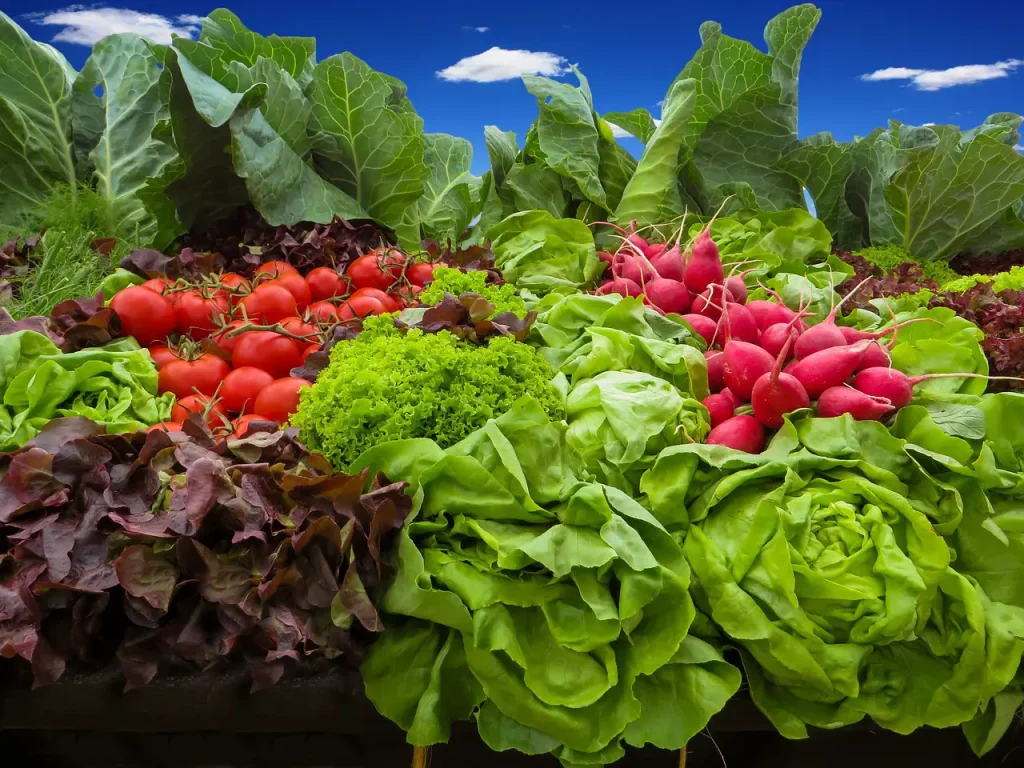
Growing vegetables in a vertical garden can be rewarding and provide you with fresh produce right at home. Choose smaller varieties that are suited to compact spaces.
Ideal Vegetables:
- Cherry Tomatoes: These small tomatoes are perfect for vertical gardens and can produce a bountiful harvest.
- Lettuce: Leafy greens like lettuce grow well in vertical setups and can be harvested continuously.
- Peppers: Compact varieties of peppers can thrive in vertical gardens and add a splash of color.
In a Nutshell
Choosing the right plants for your vertical garden can make all the difference. Herbs, succulents, and small vegetables are all excellent choices that can thrive in a vertical setup.
They not only add beauty to your space but also provide practical benefits like fresh herbs and vegetables. So, pick your favorites and start planting!
Hope this helps y’all get started on your vertical garden! Keep it green and happy gardening!
14. Pros and Cons of Vertical Gardening
Vertical gardening can be a game-changer, especially if you’re short on space. However, like any gardening method, it comes with its own set of advantages and disadvantages.
Let’s break down the pros and cons to help you decide if a vertical garden is right for you.
Pros
Efficient Use of Space
- Maximizes Small Areas: Vertical gardens allow you to grow more plants in a limited space, making them perfect for apartments or small yards.
- Utilizes Unused Spaces: Walls, fences, and even balconies can be transformed into lush green spaces.
Improved Air Quality
- Air Purification: Plants help filter out pollutants and release oxygen, improving the air quality in your home.
- Reduces Indoor Toxins: Certain plants are particularly good at absorbing harmful chemicals, contributing to a healthier living environment.
Aesthetic Appeal
- Visual Impact: Vertical gardens can turn a plain wall into a stunning green feature, adding beauty and interest to your home.
- Decorative Flexibility: You can customize your vertical garden with a variety of plants to match your decor and personal style.
Cons
Initial Cost
- Setup Expenses: Depending on the complexity, vertical garden systems can be pricey to set up, especially if you opt for advanced hydroponic systems or custom-built structures.
- Material Costs: Planters, soil, irrigation systems, and mounting hardware can add up.
Maintenance
- Regular Care Required: Vertical gardens need consistent maintenance, including watering, fertilizing, and pruning to keep plants healthy.
- Potential for Problems: Without proper care, issues like pests, diseases, and overgrown plants can become problematic.
Potential Structural Issues
- Weight Considerations: The combined weight of soil, water, and plants can be significant. It’s important to ensure your wall or support structure can handle the load.
- Water Damage: Improper watering or leaks from irrigation systems can lead to water damage on walls or other surfaces.
In a Nutshell
Vertical gardening offers many benefits, including efficient use of space, improved air quality, and aesthetic appeal.
However, it also comes with challenges like initial setup costs, ongoing maintenance, and potential structural concerns.
Weighing these pros and cons will help you decide if a vertical garden is a good fit for your home.
Hope this helps y’all make an informed decision! Keep it green and happy gardening!
15. Direction and Placement of Vertical Gardens
When setting up a vertical garden, the direction and placement are crucial to ensure your plants get the right amount of light and thrive. Here are some tips to help you find the perfect spot for your vertical garden.
Sunlight
Plants need adequate sunlight to grow, so finding a spot with enough natural light is essential. Here’s how to make sure your vertical garden gets the light it needs:
Tips for Sunlight:
- South-Facing Walls: These get the most sunlight throughout the day, making them ideal for sun-loving plants.
- East-Facing Walls: These receive morning sunlight, which is gentle and perfect for plants that don’t need intense light.
- West-Facing Walls: These get afternoon sunlight, which can be quite strong, so choose plants that can handle higher light levels.
- North-Facing Walls: These receive the least direct sunlight and are best for shade-tolerant plants.
Indoor Lighting
If your chosen spot doesn’t get enough natural light, don’t worry! You can use grow lights to supplement the light your plants need.
Using Grow Lights:
- Types of Grow Lights: LED grow lights are energy-efficient and effective. Fluorescent lights are another good option for smaller setups.
- Light Duration: Most plants need around 12-16 hours of light per day. Use a timer to ensure consistent lighting.
- Positioning: Place the grow lights close to the plants, but not so close that they cause heat damage. Adjust the height as the plants grow.
Indoor Vertical Gardens for Apartments: Conclusion
Howdy everyone! Now that we’ve covered the essentials of creating and maintaining a vertical garden in your apartment, it’s time to wrap things up with a few final thoughts and key takeaways.
Whether you’re a seasoned gardener or just starting out, vertical gardens offer a fantastic way to bring nature into your home.
Learn more: Indoor Vertical Gardening: Start Your Indoor Garden Now
Recap of Benefits
Vertical gardens are a great solution for small spaces. They maximize your available area, improve air quality, and add a beautiful, natural element to your decor.
With the right plants and proper care, your vertical garden can flourish and provide both aesthetic and health benefits.
Key Benefits:
- Space Utilization: Perfect for maximizing small areas.
- Aesthetic Appeal: Adds a green, vibrant touch to your home.
- Health Benefits: Improves air quality and creates a calming environment.
Maintenance Tips
Keeping your vertical garden healthy requires regular maintenance. Proper watering, fertilizing, and pruning are essential to ensure your plants thrive.
Using efficient irrigation systems and appropriate fertilizers can make maintenance easier and more effective.
Essential Maintenance Tasks:
- Watering: Use drip irrigation systems or self-watering planters.
- Fertilizing: Regularly feed your plants with the right nutrients.
- Pruning: Keep your plants tidy and healthy by removing dead or overgrown parts.
Choosing the Right Plants
Selecting the right plants is crucial for a successful vertical garden. Herbs, succulents, and small vegetables are all excellent choices that can thrive in a vertical setup. Consider the light and space requirements of each plant when planning your garden.
Top Plant Choices:
- Herbs: Basil, thyme, and mint.
- Succulents: Aloe vera, sedum, and echeveria.
- Vegetables: Cherry tomatoes, lettuce, and peppers.
Indoor Vertical Gardens for Apartments: Key Takeaways
- Efficient Use of Space: Vertical gardens make the most of small areas, perfect for apartments.
- Improved Air Quality: Plants help filter out pollutants and release oxygen, benefiting your health.
- Aesthetic Benefits: Adds beauty and a natural touch to your home decor.
- Cost Considerations: DIY projects can be done cheaply, while pre-made systems may have higher initial costs.
- Maintenance Needs: Regular watering, fertilizing, and pruning are essential for healthy plants.
- Choosing Plants: Opt for indoor-friendly plants that suit your space and light conditions.
- Direction and Placement: Ensure your garden gets enough light, using grow lights if necessary.
- Soil vs. Hydroponics: Decide between traditional soil-based systems and efficient hydroponic setups.
Final Thoughts
Creating a vertical garden in your apartment is a rewarding project that brings numerous benefits.
By carefully planning and maintaining your garden, you can enjoy a lush, green space that enhances your home and well-being.
So, roll up your sleeves, get creative, and start building your vertical garden today!
Hope this helps y’all embark on your vertical gardening journey! Keep it green and happy gardening!
Visit my Amazon Influencer Page for videos and gardening products Grow Your Own Garden












